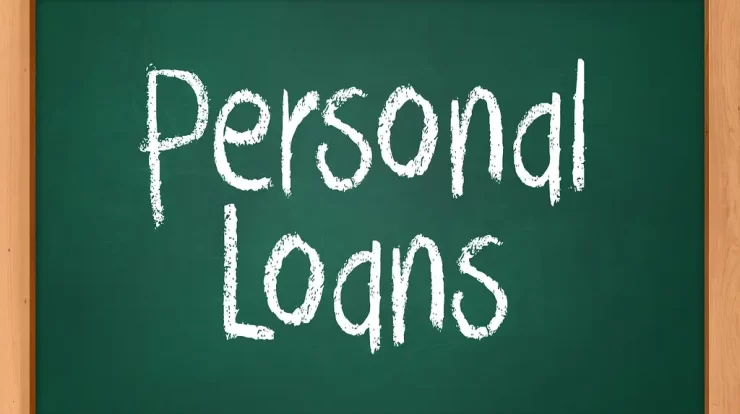
Table of Contents
Understanding Personal Loans and Credit Cards
Definition of Personal Loans
Personal loans are a type of loan that provides a lump sum of money to the borrower, which is then paid back in fixed monthly installments over a set period of time. These loans typically have a fixed interest rate, which means that the borrower will pay the same amount of interest over the life of the loan.
Personal loans are often used to finance large purchases, such as a car or home renovations, or to consolidate high-interest debt. They can be secured or unsecured, with secured loans requiring collateral such as a car or home to secure the loan.
Definition of Credit Cards
Credit cards are a type of revolving credit that allows the borrower to borrow money up to a certain credit limit. The borrower can then use the card to make purchases, and must pay back the borrowed amount plus interest each month.
Credit cards typically have a variable interest rate, which means that the interest rate can change over time based on market conditions. They can be used for everyday purchases, such as groceries and gas, as well as larger purchases.
Credit cards also often come with rewards programs, such as cashback or travel points, which can provide additional benefits to the borrower.
Overall, personal loans and credit cards are two different types of borrowing that can be used for different purposes. Personal loans are best suited for large purchases or debt consolidation, while credit cards are better for everyday expenses and building credit.
Key Differences
Interest Rates
Personal loans in Norway generally have lower interest rates than credit cards. The interest rate for a personal loan is usually fixed and can range from 6-10%, depending on the lender and the borrower’s creditworthiness. In contrast, the interest rate for credit cards in Norway can vary widely and is typically higher than that of personal loans. Credit card interest rates can range from 12-25%, depending on the card issuer, the borrower’s credit score, and other factors.
Repayment Terms
Personal loans in Norway typically have a fixed repayment term, which means the borrower has a set amount of time to repay the loan in full. The repayment term can range from 1-5 years, depending on the lender and the borrower’s financial situation. Credit cards, on the other hand, have a revolving credit line, which means the borrower can make minimum payments and carry a balance from month to month. This can make it more difficult to pay off the debt and may result in higher interest charges over time.
Application Process
The application process for personal loans in Norway typically involves filling out an application form and providing documentation of income, employment, and other financial information. The lender will then review the application and make a decision on whether to approve the loan. Credit card applications in Norway are usually simpler and can be completed online or in person. The borrower will need to provide personal information, such as their name, address, and income, and may need to provide documentation to verify their identity and creditworthiness.
Credit Limit
Personal loans in Norway provide a lump sum of money that the borrower can use for any purpose. The loan amount is determined by the lender based on the borrower’s creditworthiness and financial situation. In contrast, credit cards in Norway have a credit limit, which is the maximum amount of money the borrower can borrow on the card. The credit limit is determined by the card issuer based on the borrower’s creditworthiness and other factors. The borrower can use the credit card to make purchases up to the credit limit, but will need to make payments to reduce the balance and free up credit for future purchases.
Pros and Cons
Advantages of Personal Loans
- Lower interest rates: Personal loans usually have lower interest rates than credit cards, which can save borrowers money in the long run.
- Fixed monthly payments: Personal loans have fixed monthly payments, which can help borrowers budget and plan their finances.
- No collateral required: Personal loans are unsecured, which means borrowers don’t have to put up collateral like a home or car.
- Larger loan amounts: Personal loans can offer larger loan amounts than credit cards, which can be useful for larger expenses.
Disadvantages of Personal Loans
- Longer application process: Personal loans can take longer to process and approve than credit cards, which can be inconvenient for borrowers who need funds quickly.
- Hard credit check: Personal loans require a hard credit check, which can temporarily lower a borrower’s credit score.
- Prepayment penalties: Some personal loans may have prepayment penalties, which can make it more expensive to pay off the loan early.
- Strict eligibility requirements: Personal loans may have strict eligibility requirements, which can make it difficult for some borrowers to qualify.
Advantages of Credit Cards
- Convenience: Credit cards are widely accepted and can be used for a variety of purchases, making them convenient for everyday expenses.
- Rewards programs: Many credit cards offer rewards programs, which can earn borrowers cash back, points, or miles for purchases.
- Grace period: Credit cards have a grace period, which allows borrowers to avoid interest charges if they pay their balance in full each month.
- Build credit: Using a credit card responsibly can help borrowers build or improve their credit score.
Disadvantages of Credit Cards
- High interest rates: Credit cards often have higher interest rates than personal loans, which can make them more expensive over time.
- Variable interest rates: Credit card interest rates can be variable, which means they can change over time and make it difficult for borrowers to plan their finances.
- Temptation to overspend: Credit cards can make it easy for borrowers to overspend and accumulate debt.
- Fees: Credit cards may have annual fees, balance transfer fees, cash advance fees, and other fees that can add up quickly.
Impacts on Credit Score
Both personal loans and credit cards can have an impact on a person’s credit score. However, the impact can differ based on various factors such as payment history, credit utilization, and credit mix.
Personal Loans
Formally applying for a personal loan triggers a hard credit check, which is a more thorough evaluation of the borrower’s credit history. The inquiry usually knocks up to five points off the borrower’s FICO credit score. However, if the borrower is approved for the loan and makes timely payments, it can have a positive impact on their credit score. This is because personal loans are installment credit, and making regular payments on time can show lenders that the borrower is responsible and reliable.
In Norway personal loans or forbrukslån (also known as personal loans), as they call it can be quite expensive due to it’s high APR, thats why many people turn over to credit cards for smaller sums of money,.
Credit Cards
Credit cards are revolving credit, which means that the borrower can continuously borrow and repay funds, up to a certain credit limit. Credit utilization, which is the amount of credit used compared to the credit limit, can have a significant impact on a person’s credit score. If a borrower uses too much of their available credit, it can negatively impact their credit score. However, if they use a small percentage of their available credit and make timely payments, it can positively impact their credit score.
In conclusion, both personal loans and credit cards can impact a person’s credit score. However, the impact can differ based on various factors such as payment history, credit utilization, and credit mix. It is important for borrowers to use credit responsibly and make timely payments to maintain a good credit score.
Norwegian Source for kredittkort in norway
Choosing Between Personal Loans and Credit Cards
When it comes to borrowing money, choosing between a personal loan and a credit card can be a difficult decision. Both options have their advantages and disadvantages, and the choice ultimately depends on the borrower’s individual needs and financial situation. Here are some factors to consider when deciding between a personal loan and a credit card:
Interest Rates
One of the most significant differences between personal loans and credit cards is their interest rates. Personal loans usually have lower interest rates than credit cards, making them a better choice if the borrower needs to borrow a larger sum of money and pay it back over a more extended period. Credit cards, on the other hand, have higher interest rates, but they offer more flexibility and convenience.
Repayment Terms
Personal loans typically have fixed repayment terms, meaning the borrower knows exactly how much they need to pay each month. Credit cards, on the other hand, have minimum payments that vary based on the balance owed. While this flexibility can be convenient, it can also lead to higher interest charges and a more extended repayment period.
Credit Score
Personal loans often require a higher credit score than credit cards. Borrowers with excellent credit scores may be able to get lower interest rates and better terms on a personal loan than a credit card. However, borrowers with lower credit scores may have a harder time qualifying for a personal loan and may be better off with a credit card.
Purpose of the Loan
Finally, borrowers should consider the purpose of the loan when deciding between a personal loan and a credit card. Personal loans are better suited for larger purchases or debt consolidation, while credit cards are better for smaller purchases or everyday expenses. Borrowers should also consider the interest rates and repayment terms for each option when deciding which one is best for their needs.
In summary, when choosing between a personal loan and a credit card, borrowers should consider factors such as interest rates, repayment terms, credit score, and the purpose of the loan. By weighing these factors, borrowers can make an informed decision that best suits their financial needs.






